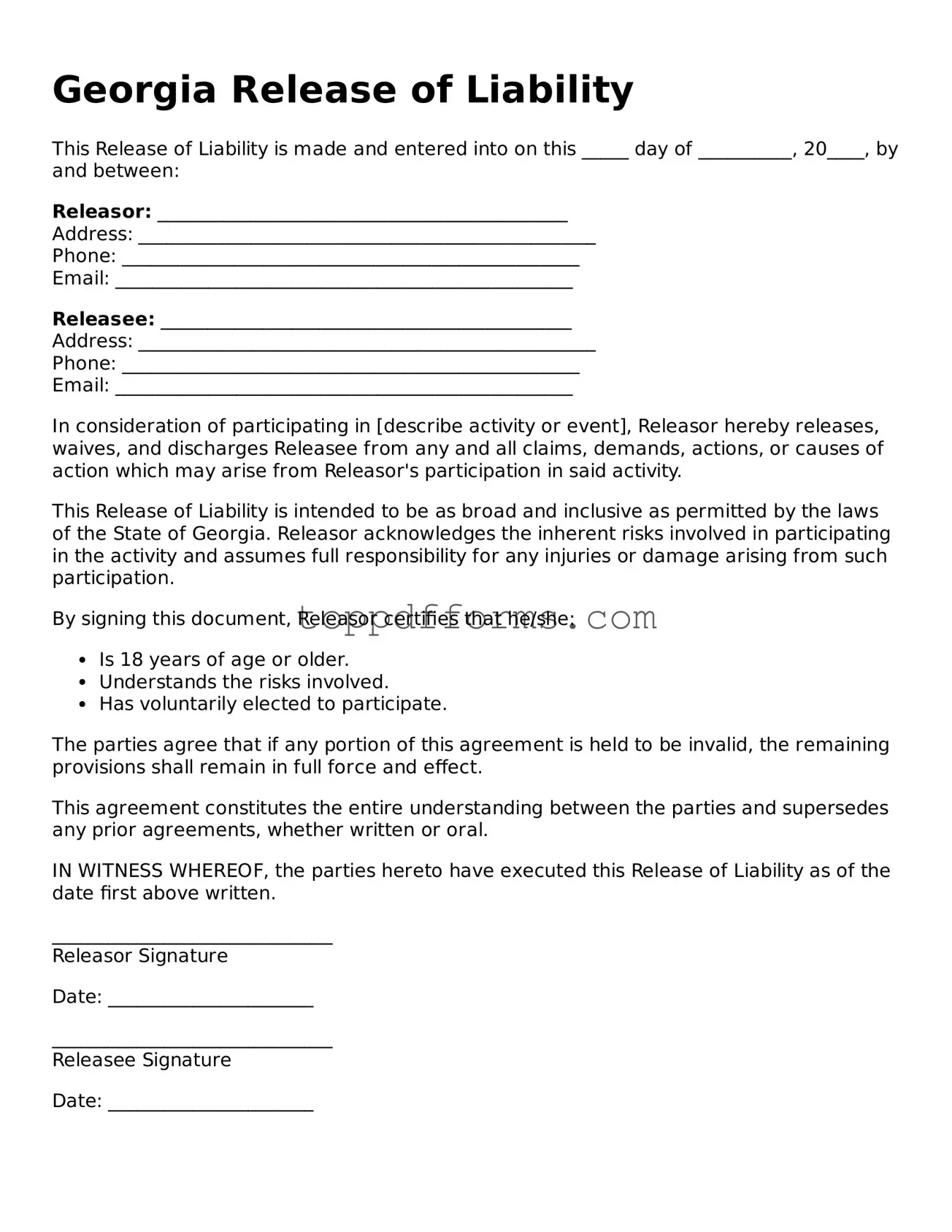What is a Georgia Release of Liability form?
A Georgia Release of Liability form is a legal document used to protect an individual or organization from being held liable for injuries or damages that may occur during an activity. By signing this form, participants acknowledge the risks involved and agree not to hold the organizer responsible for any accidents or injuries that may happen.
When should I use a Release of Liability form?
This form is commonly used in situations involving physical activities, such as sports events, recreational activities, or any event where there is a risk of injury. If you are organizing an event where participants may be exposed to potential hazards, it's advisable to have them sign this form to minimize liability.
Who should sign the Release of Liability form?
Typically, all participants in the activity should sign the form. If a participant is a minor, a parent or legal guardian must sign on their behalf. This ensures that the responsible adult acknowledges the risks and agrees to the terms of the release for the minor.
Is a Release of Liability form legally binding in Georgia?
Yes, a properly executed Release of Liability form can be legally binding in Georgia. However, it must be clear, concise, and unambiguous. Courts may not enforce a release if it is deemed overly broad or if it does not adequately inform the participant of the risks involved.
What information should be included in the form?
The form should include the names of the parties involved, a description of the activity, a clear statement of the risks, and a declaration that the participant is voluntarily assuming those risks. Additionally, it should have a section for signatures and dates to confirm agreement.
Can a Release of Liability form protect against all types of claims?
No, while the form can provide protection against many types of claims, it may not shield an organizer from liability in cases of gross negligence or intentional misconduct. It is important to understand the limits of the form and consult legal advice if unsure.
Do I need a lawyer to draft a Release of Liability form?
While it is not strictly necessary to hire a lawyer to draft a Release of Liability form, it is recommended, especially for complex activities or events. A legal professional can ensure that the form meets all legal requirements and adequately protects your interests.
How can I ensure that participants understand the Release of Liability form?
To ensure understanding, provide a thorough explanation of the form before participants sign it. Encourage them to ask questions and clarify any uncertainties. This not only helps them comprehend the risks involved but also strengthens the enforceability of the document.
What should I do if a participant refuses to sign the form?
If a participant refuses to sign the Release of Liability form, it is advisable to prohibit them from participating in the activity. Signing the form is a condition of participation, and without it, you may not be able to protect yourself from potential liability.
Can I modify a standard Release of Liability form?
Yes, you can modify a standard form to fit your specific activity or event. However, any modifications should be made carefully to ensure that they do not compromise the clarity or legality of the document. It is wise to have any changes reviewed by a legal professional.
